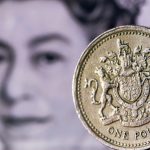The euro edged lower against the US dollar and was poised for a weekly decline, after a series of upbeat US reports continued to weigh on greenbacks demand.
Having reached a session low at 1.3593 at 09:45 GMT, EUR/USD traded at 1.3598 at 12:18 GMT, losing 0.16% for the day. The pair has headed for a weekly decline of 0.52% so far. Support was likely to be received at January 16th low, 1.3583, while resistance was to met at January 16th high, 1.3650.
The greenback continued to draw support, following a number of US upbeat reports released yesterday.
In a report the Federal Reserve Bank of Philadelphia said its manufacturing activity index improved to a reading of 9.4 in January, surpassing preliminary estimates of a reading of 8.8, while in December the index came in at 6.4. The reading reflects the difference between optimistic and pessimistic forecasts, measured as a percentage, regarding business conditions in manufacturing in the region.
A separate report by the US Department of Labor, showed the number of initial jobless claims fell to 326 000 in the week ended January 11th, the weakest level since November. Analysts had expected the people who file for unemployment benefits will be 328 000, after they have been revised downwards to 328 000 from 330 000 in the previous week.
In addition, the Bureau of Labor Statistics, part of the US Department of Labor, released a report that showed nation’s PPI surged by an annualized 1.2% in December, after the index increased by 0.7% in November. Analysts had expected the PPI will rise to 1.1%. Month-over-month, the PPI increased by 0.4% in December, the largest increase since June and in line with analysts’ forecasts and after the index declined by 0.1% in the preceding month.
Data showed that the core PPI also rose by an annualized 1.4%, exceeding previous month 1.3% increase and higher than analysts’ estimates of a 1.3% gain. Month-over-month, the index rose by 0.3% in December, while analysts had expected the index will rise by 0.1%. In November the core PPI rose by 0.1%.
On Wednesday, data showed a gauge that tracks the manufacturing activity in the state of New York, increased to 12.1 in January, the strongest level since May 2012, which was more than three times larger-than-projected. According to the median analyst’ forecast the index should have increased to 3.5, after an upward revision to 2.22 in the previous month.
Investors awaited the release of US data on building permits, housing starts and industrial production, accompanied by s report on the the preliminary reading of the University of Michigan consumer sentiment index. All the reports are scheduled to be published later in the day.
Meanwhile, yesterday, the euro was pressured after a report by Eurostat revealed the consumer price inflation in the euro zone rose by 0.3% in December, in line with analysts’ expectations and after a 0.1% drop in the preceding month. On year-over-year basis, the CPI increased by 0.8% in December, unchanged from November’s preliminary estimates and in line with analysts’ projections.
The data showed that the rate still remains well below ECB’s target of 2% rate of inflation.
The monthly bulletin of the ECB released earlier in the day, largely reflected the statement by its President Mario Draghi, following central bank’s decision to lower interest rates in November. In its bulletin ECB reiterated that it will stick to monetary policy of low interest rates until it is needed. The central bank also expected interest rates to remain at these historically low levels for a prolonged period of time and the inflation rate to remain weak in the coming months.
Elsewhere, GBP/USD hit a session high at 1.6458 at 09:55 GMT, after which consolidation followed at 1.6447, adding 0.57% for the day. Support was likely to be received at December 18th low, 1.6273, while resistance was to be encountered at January 14th high, 1.6464.





